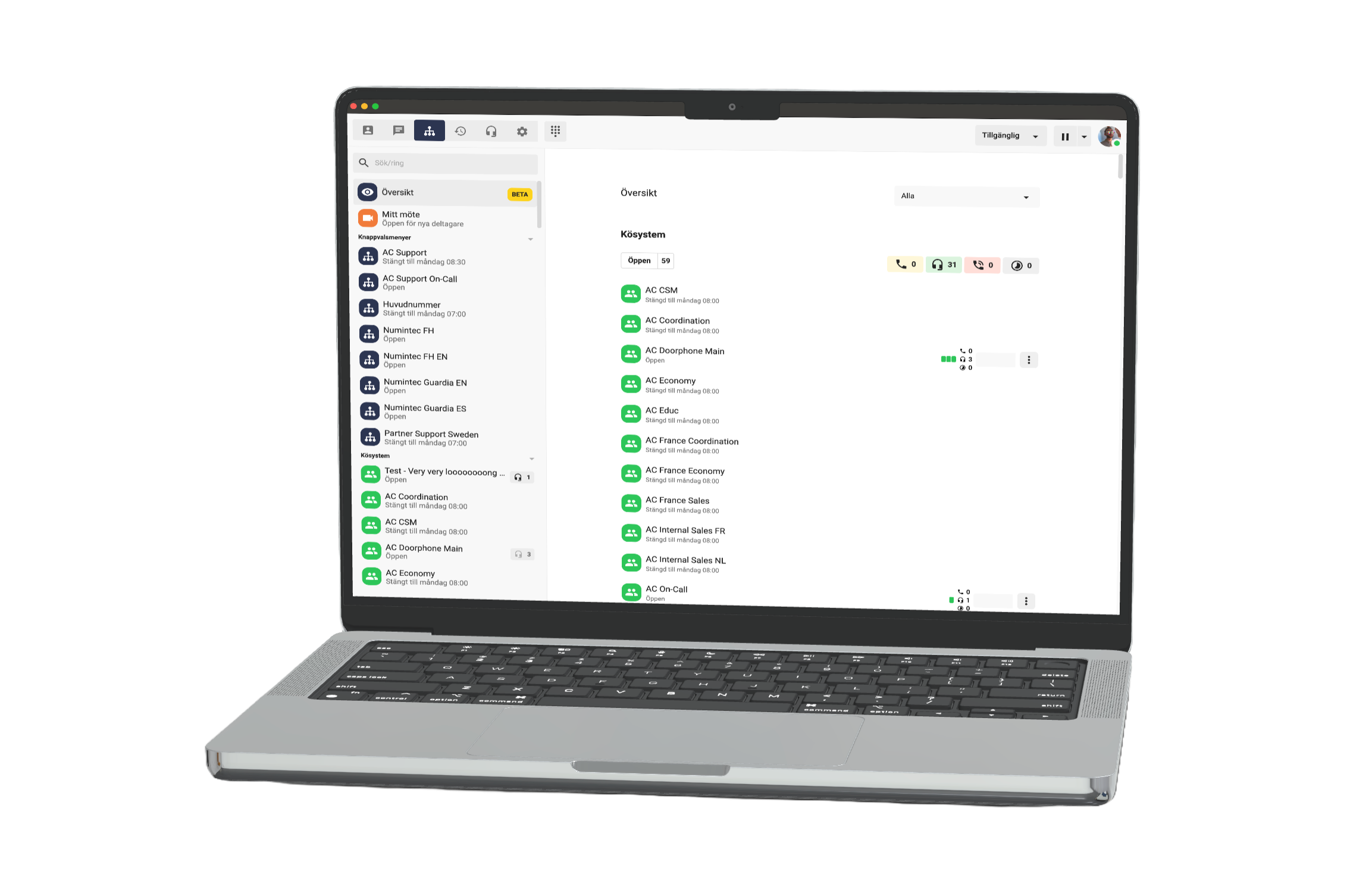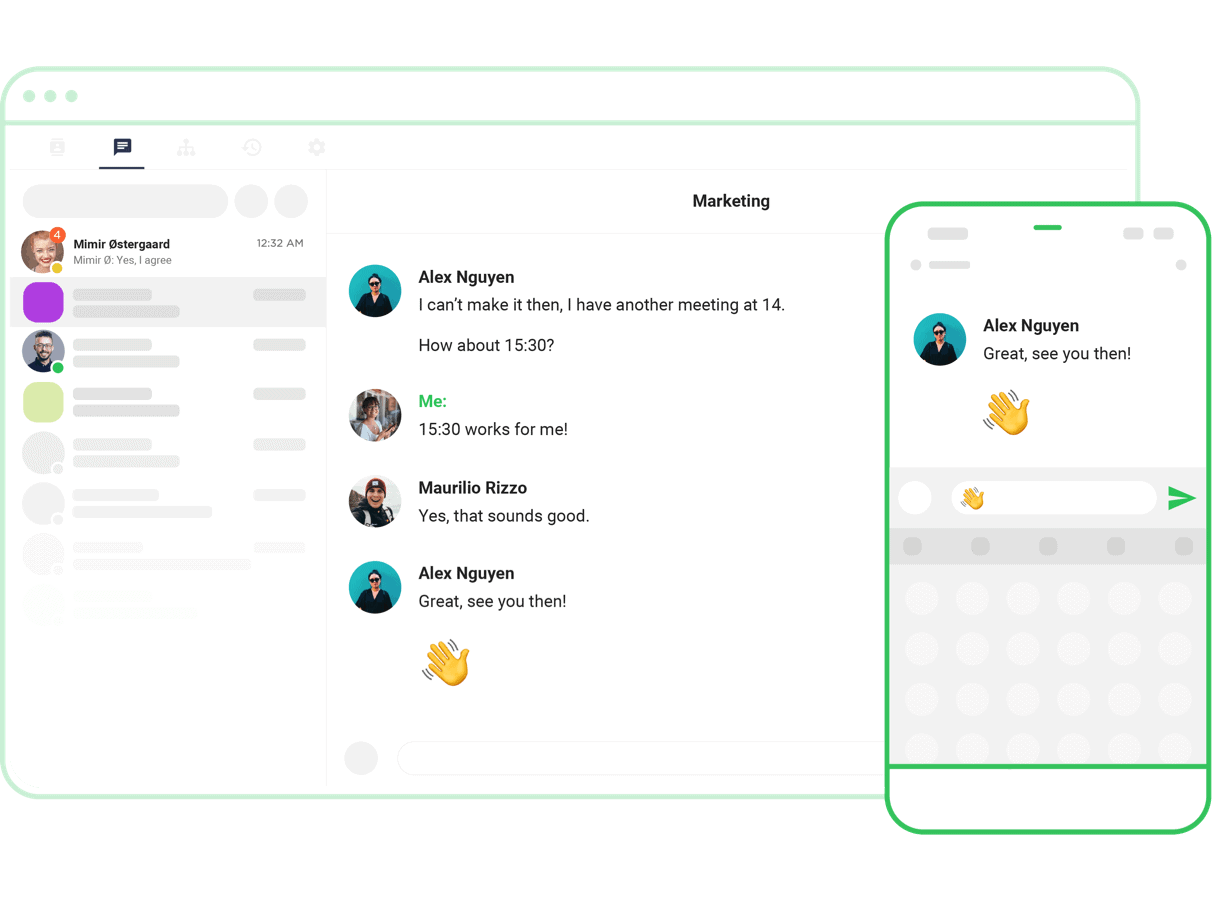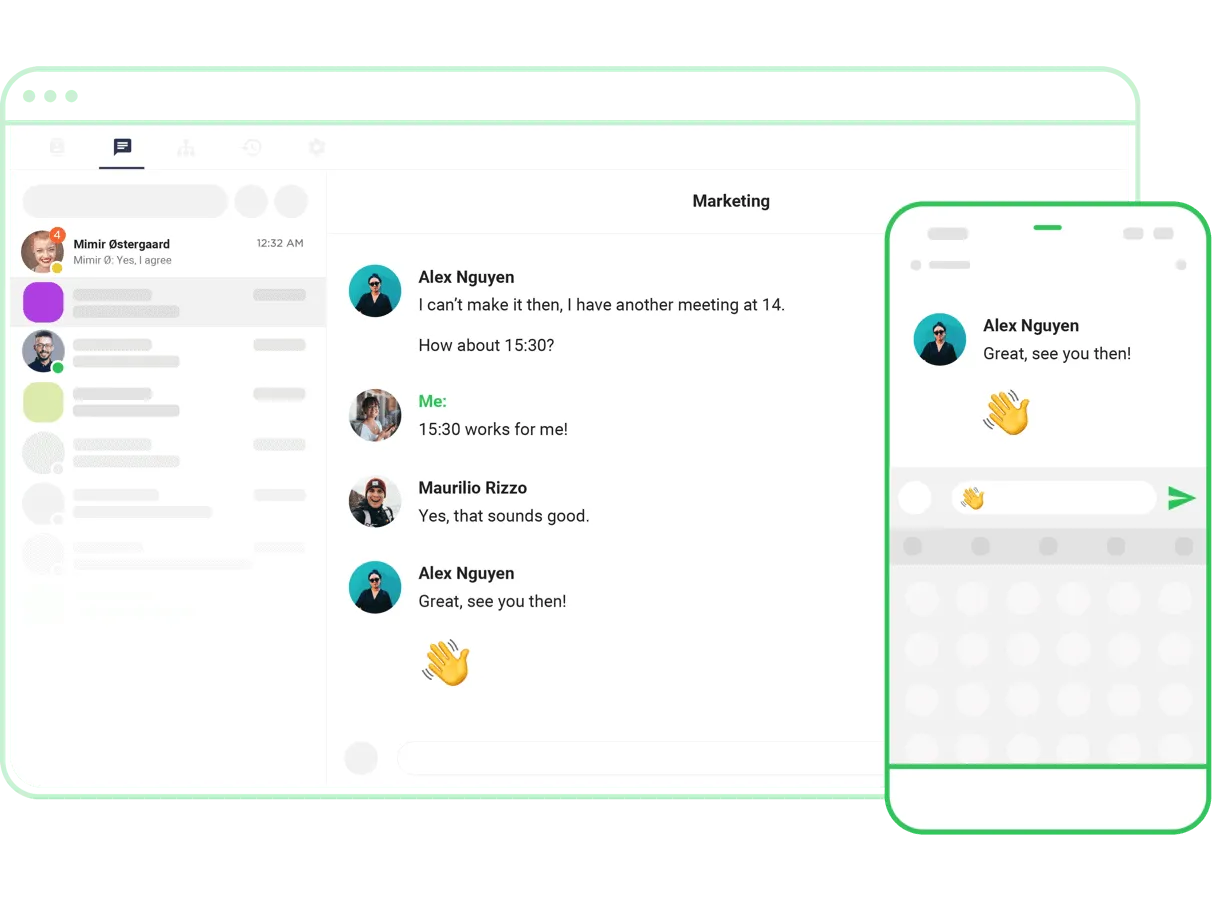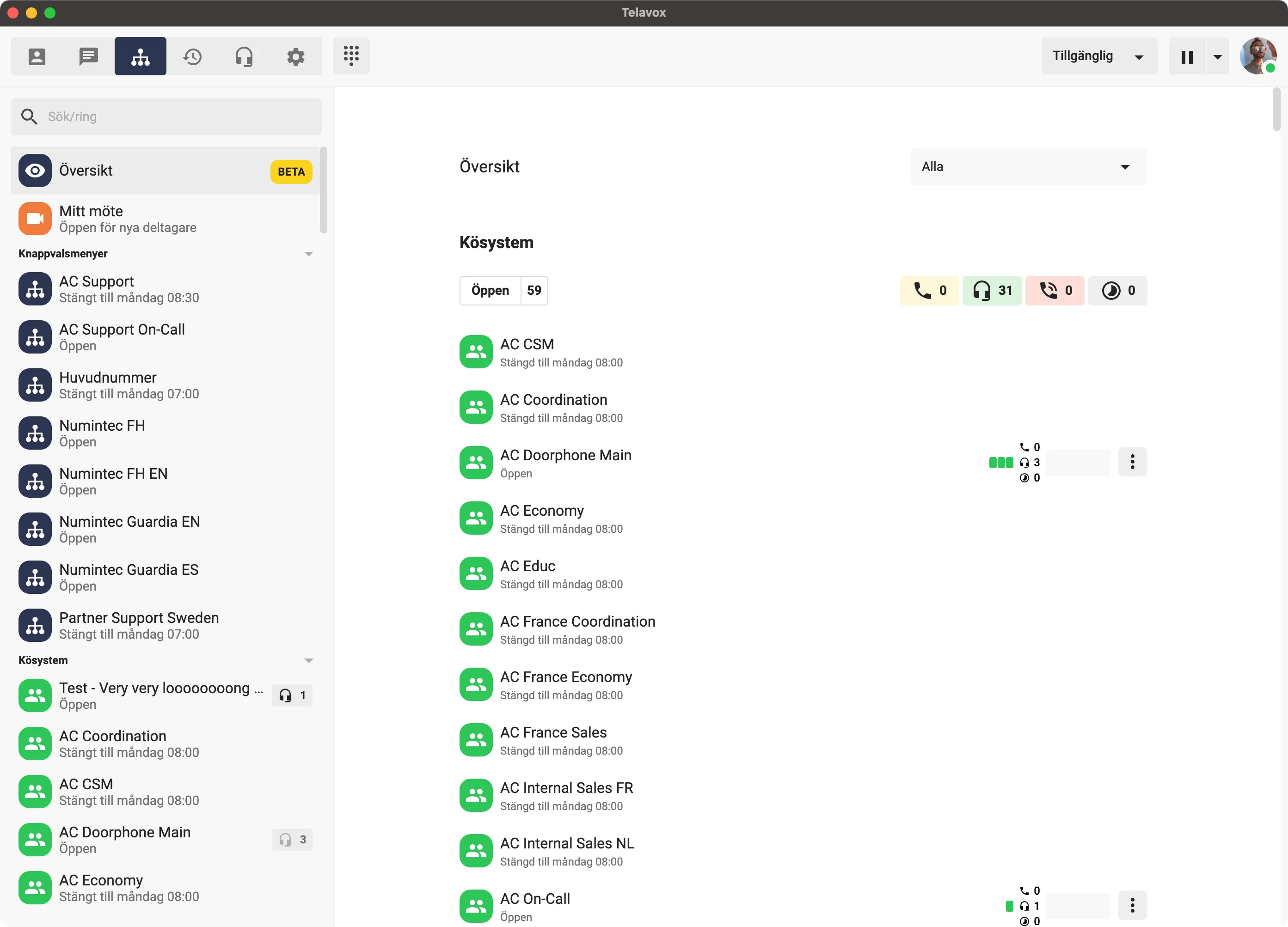Telavox
Switchboard, chat, meetings, and contact center
Client
Telavox
Year
2024
Agency
Telavox
Role
Tech




Case Study: Fullstack Developer at Telavox
Overview
At Telavox, I work as a Fullstack Developer with a focus on front-end development. Our team is dedicated to building an Electron and web application for our softphone product, ensuring it meets the highest standards of performance and user experience.
Project 1: Visual Refresh and RTL Support
The primary goal of this project was to update the design of our application with a modern, sleek interface and to introduce Right-to-Left (RTL) support for the Arabic language. This involved a complete rewrite of the aspplication in TypeScript, as well as addressing technical debt by migrating from MUI4 to Tailwind CSS.
Key Responsibilities:
- Collaborated closely with a multidisciplinary team of developers and UX designers.
- Guided the UX team to ensure component designs were practical and implementable.
- Rewrote the entire application in TypeScript to enhance maintainability and performance.
- Integrated Tailwind CSS to replace MUI4, simplifying the styling process and improving design consistency.
- Implemented RTL support to make the application accessible to Arabic-speaking users.
Achievements:
- Successfully delivered a modernized application interface that improved user satisfaction and engagement.
- Enhanced the application's maintainability and scalability by leveraging TypeScript and Tailwind CSS.
- Fostered a collaborative environment with the UX team, resulting in well-designed, user-friendly components.
Project 2: Next-Gen Video Conferencing Platform: Revolutionizing Virtual Collaboration 🚀
In today’s hyperconnected world, video conferencing has become the backbone of communication. I set out to develop a next-gen video conferencing solution that goes beyond basic video calls—designed for seamless collaboration, crystal-clear communication, and adaptability.
Key Features 🌟
-
Real-Time Chat 💬 A sleek, user-friendly chat interface enables instant text communication during calls, ensuring nothing is missed. Powered by modern web technologies for low-latency messaging.
-
Adaptive Video Quality Optimization 🎥 Built for global connectivity, the platform dynamically adjusts video quality based on network conditions. This ensures a smooth experience even on low-bandwidth connections.
-
AI-Powered Live Captions ✍️ Integrated with OpenAI models, this feature provides real-time, accurate captions to improve accessibility and inclusivity.
The Tech Stack 🛠️
-
Frontend:
- TailwindCSS: For a sleek, responsive, and modern UI.
- TypeScript: For strongly-typed, maintainable code.
-
Backend:
- Mediasoup: The powerhouse for WebRTC-based video conferencing. It enables ultra-low latency, scalability, and flexible topologies.
- Custom JS SDK: Built to streamline communication between the frontend and backend.
-
AI Capabilities:
- OpenAI’s language models power real-time captioning, offering accessibility and context-aware insights during meetings.
Challenges & Solutions 🧩
-
Latency Optimization: With Mediasoup, we implemented a selective forwarding unit (SFU) architecture, ensuring low latency for multi-participant calls.
-
Seamless Video Quality Adjustments: Leveraging advanced WebRTC APIs, I built an adaptive mechanism that analyzes user bandwidth and adjusts video streams dynamically.
-
AI Caption Accuracy: Integrated a custom preprocessing layer for better speaker segmentation and context recognition using OpenAI’s API.
Why It Stands Out 🌐
This platform isn’t just another video conferencing app—it’s built to tackle the most common frustrations with virtual collaboration. By combining cutting-edge WebRTC technology, AI-driven features, and an intuitive design, it enhances productivity and brings people closer together, no matter where they are.
Project 3: Feature Flag Management System
A robust, full-stack feature flag management system built with modern web technologies, enabling teams to control feature rollouts and manage account-specific settings with precision and ease. Technical Overview
Built with a cutting-edge tech stack:
- Frontend: Next.js 13+ with TypeScript and App Router
- Backend: Node.js with PostgreSQL
- ORM: Drizzle ORM for type-safe database operations
- UI: Tailwind CSS with shadcn/ui components
- State Management: React Hook Form for form handling
- Theme: Dark/Light mode with system preference detection
Key Features
-
Feature Flag Management
- Create and manage feature flags with version control
- Set minimum client version requirements
- Configure user update permissions
- Real-time status monitoring
-
Account-Level Controls
- Granular feature toggle management per account
- Customer-specific feature settings
- Bulk feature management capabilities
-
User Experience
- Responsive, accessible interface
- Dark/Light theme support
- Real-time updates
- Comprehensive error handling
- Loading states for optimal UX
Technical Highlights
-
Database Architecture
- Optimized schema design with proper relationships
- Connection pooling for enhanced performance
- Type-safe database operations
-
API Design
- RESTful endpoints for all CRUD operations
- Proper error handling and status codes
- Efficient data fetching patterns
-
Security & Performance
- Type-safe operations throughout the stack
- Optimized database queries
- Form validation and sanitization
- Protected API endpoints
This project demonstrates expertise in:
- Full-stack TypeScript development
- Modern React patterns and best practices
- Database design and optimization
- UI/UX design principles
- Production-grade error handling
- Performance optimization
- Theme system implementation
The system is designed to scale, making it suitable for both startups and enterprise-level applications requiring sophisticated feature flag management.

